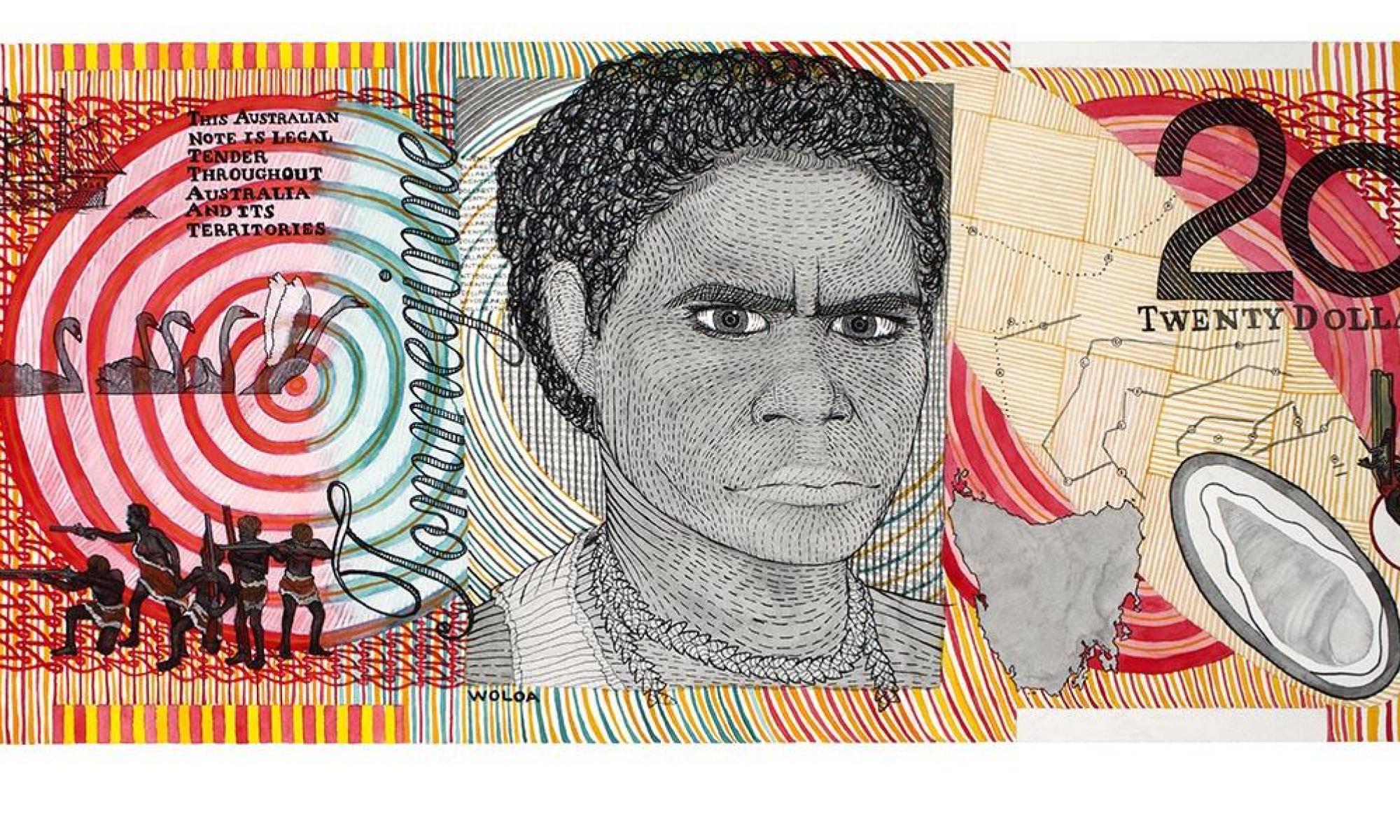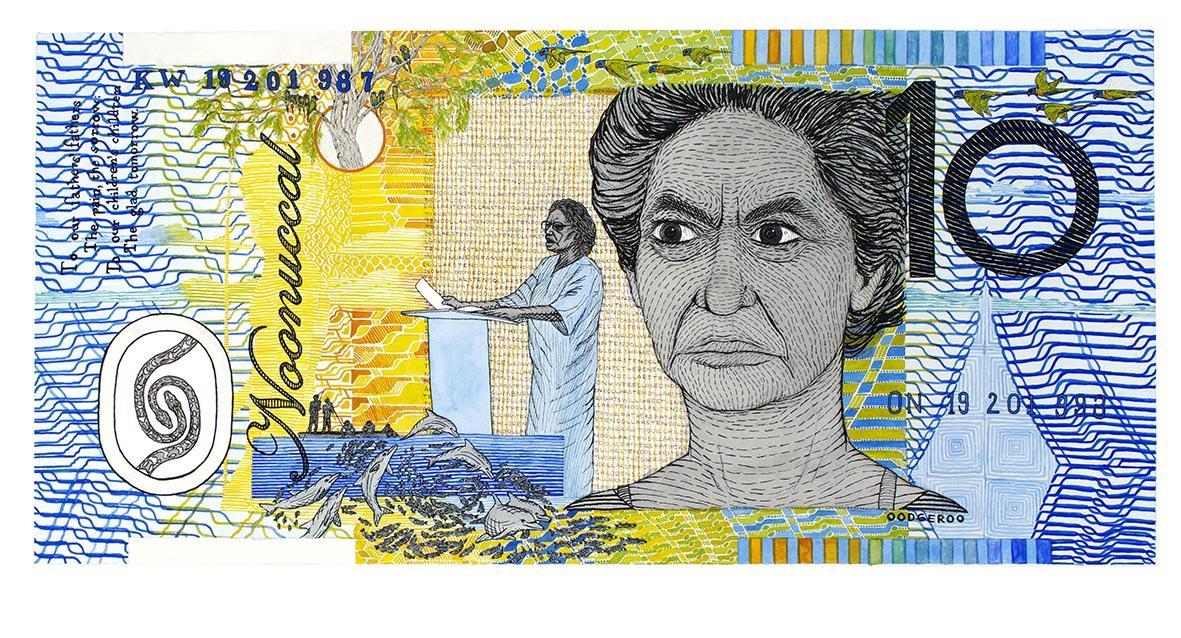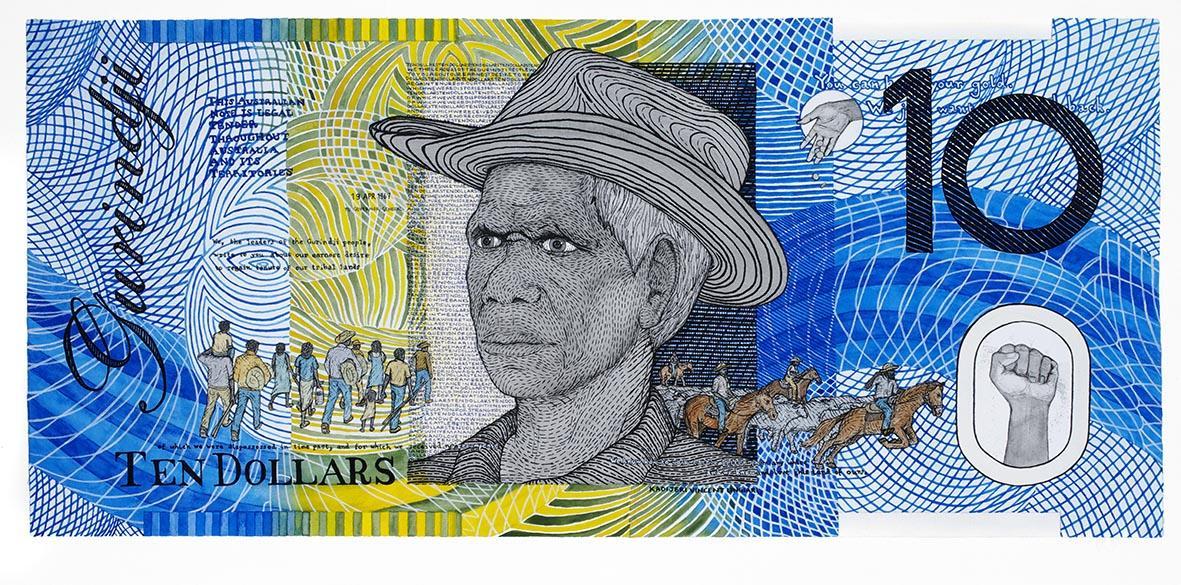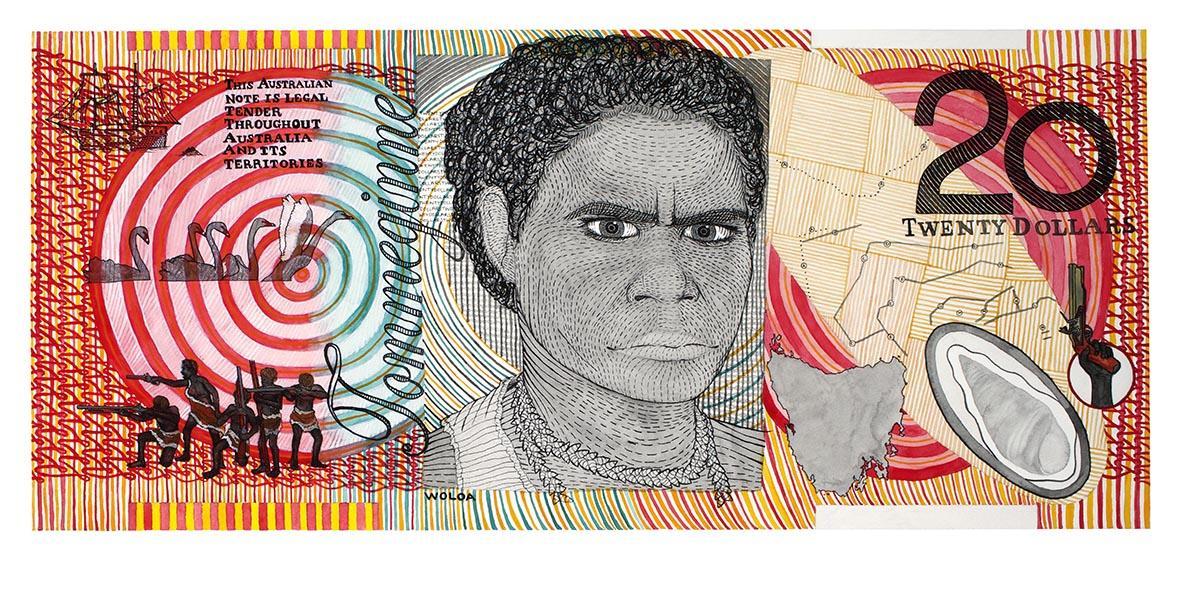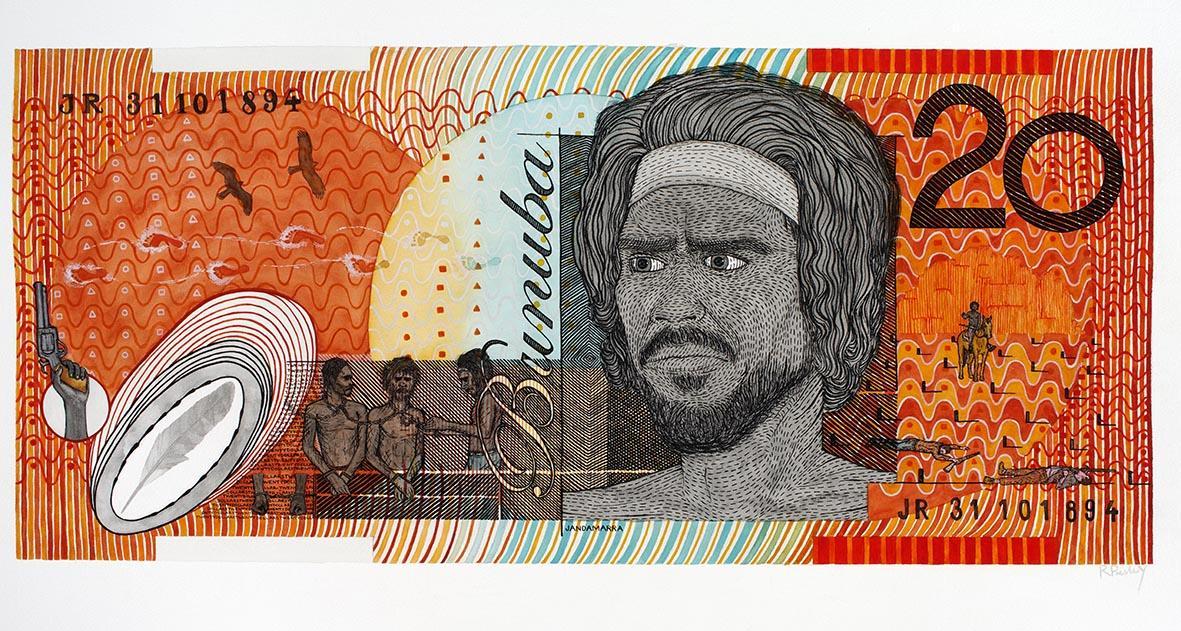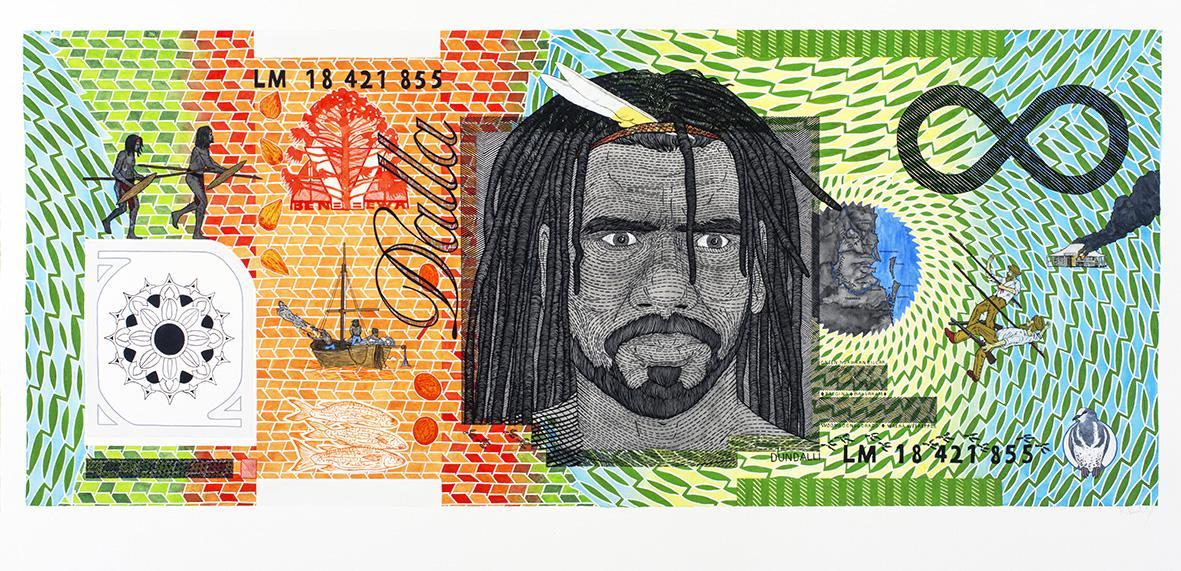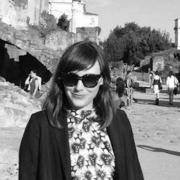Blood Money: Ryan Presley and Tess Maunder In Conversation
Ryan Presley is a Brisbane based artist originally from Alice Springs. His father’s family is Marri Ngarr and originate from the Moyle River region in the Northern Territory, while his mother’s family were Scandinavian immigrants to Australia. Presley utilises a variety of media and techniques and his practice involves a questioning and negating of historical and contemporary contexts. Presley utilises his own mixed heritage experiences and insights to contribute other understandings to the social and cultural nature of past and present colonial Australia. In 2016, Presley completed a PhD at the Queensland College of Art, and his work has been included in the 33rd Telstra National Aboriginal and Torres Strait Islander Art Awards in Darwin, Frontier Imaginaries: No Longer at Ease at the Institute of Modern Art in Brisbane, and was featured in the 2016 TarraWarra Biennial: Endless Circulation. In this conversation Ryan Presley speaks to Tess Maunder about his practice to date, and gives insight into his upcoming solo exhibition, Blood Money, curated by Madeleine King at the Institute of Modern Art, Brisbane.
TM: Going back to the very beginnings of your practice can you tell us more about your motivations for becoming an artist?
RP: I would say that my hopes in becoming an artist were to achieve some degree of autonomy. As a boy, I would draw a lot and create my own board games and that sort of thing. My grandfather was at times a sculptor and a painter. From memory, he went through art college in America somewhere but then ended up in Rome, teaching these skills. My grandparents then immigrated here in the late ‘50s and moved out to Alice Springs. My grandfather then worked in various Central Desert communities and for a significant amount of time was a bi-lingual English teacher in Pitjantjatjara country, speaking Pitjantjatjara and English. Over a long period, he collected many artworks from people of that desert country and I’d grow up in that house of my grandparents with these many works in salon style hang. So looking back now I would say those experiences would go on to shape motivations to pursue art-making. As I started attempting an actual artistic practice I think my that the joy of having an imaginary idea and then cementing it (putting paint to paper etc.) in the tangible world in a direct, solo format would incentivise my motivations.
TM: Your series Blood Money, which has been ongoing since 2010, presents Australian banknotes featuring with Aboriginal historical figures, instead of the current mostly white settler Australian figures. What will you be presenting in the next iteration of this series at the IMA?
RP: It will be a mix of works developed over the past eight years. We’ve done our best to find as many of the original set of watercolours that I did over 2010 and 2011 [which were all sold]. I have more recently completed some new works that compliment and build on the original series. A feature of the show will also be a staffed Currency Exchange Terminal. During operating hours attendees to the show will be able to convert their Australian banknotes into printed Blood Money banknotes. The prototype of the Exchange Booth was a part of the 2016 TarraWarra Biennial. So there are various threads of the same overall series that have previously been shown rather disparately. I am now very excited into bring together the variations on the Blood Money theme for this solo show at IMA.
TM: I’m interested in your process of re-examining and subverting ideas surrounding value, currency and history through the lens of Aboriginal Australia, and in turn, through this repositioning and asserting key voices from Aboriginal Australia. What was it about currency that drew you in as a starting point?
RP: Our cash is so colourful it’s hard not to have it draw some attention. I think that we are so saturated by the concept of money and its imagery that it’s an ideal vehicle to portray events, people and ideas that are unfamiliar or are verifiably unpopular. Australian banknotes’ colouration and design don’t particularly strike me as culturally British or Anglo-Saxon looking. The use of colour, line and tone and in particular the prominent pattern look more like a grasping at cultural identity. And I think the grasping is chiefly at cultural properties of Aboriginal Australia. Beneath the colourful veneer (which I think functions more as a clue than a veneer) there is much to be said about the operations of colonialism, dispossession and possession that function in the everyday Australian economy and the visible depiction and presence of money.
TM: Some of these important yet overlooked, Aboriginal historical figures include Fanny Balbuk, an early Aboriginal land rights leader in Perth. Can you tell us about your research process for learning more about these figures that you have included in this series?
RP: A lot of these people I had heard about growing up through different people’s stories and oral histories. Over the years, I have done my best to seek out different sources to add different pieces of information. I remember reading old settler accounts of the colonial process in Tasmania where they had (to their dismay) discovered that the Aboriginal people there were manufacturing and storing their own flint to operate flintlock pistols and rifles that were in their possession. And this was a significant piece of information that I wove into the 20 Dollar—Woloa Commemorative painting. Over the past eight years I’ve been assisted by direct family members of the people I’ve depicted, or I’ve gone through museum archives or come across a documentary that has a brief mention of the person that might shed a valuable light on their principles.
TM: Can you tell us more about the interactive aspect of your exhibition, which I believe will be called the ‘Currency Exchange’ Terminal?
RP: As I mentioned earlier, the viewer will be able to cash out with some circulation size Blood Money notes. I am keen to see how this element of the show plays out. One of the thing I like about the work is the implicit message that the viewer is entering or amongst foreign territory or at least a transitional territorial space. Much like an airport where these sorts of terminals are particularly prevalent. In participating with the booth installation, the audience will have a choice of three different rates of exchange for the monies. One that undercuts the Blood Money value, one that is on parity, and a third where the Blood Money value are higher than the Australian dollar. All transactions are logged automatically by the register so by the end of the show there will be an anonymous tally of all the choices that were made by the purchasers. All the funds of the Australian dollar will then be sent to the Gap Youth and Community Centre in Alice Springs as well as Carinity Southside Education in Brisbane as a gesture of contribution to the great resource they are for the community of these areas.
TM: I was fortunate enough to attend your exhibition TERROR ISLAND (WISH YOU WERE HERE) held at Boxcopy during October and November in 2017. Your work in this exhibition subverted Christian iconographic traditions, can you tell us more about your intentions?
RP: There’s a bit more personal experience mixed in with my motivation to use that sort of depiction for essentially politically driven images. My grandparents were a mix of Lutheran and Catholic backgrounds so I ended up having to begrudgingly go to church on Sundays, pray regularly, and get baptised etc. Icons were often present and mixed up in the idolatry typical of some Catholics. And this was the case in my early days in Alice Springs. But I also found these small images very epic and searingly dramatic and it was more recently that I began to assess their narrative implications and composition. In the Terror Island show, and in works I made through my PhD study, I reimagined iconographic compositions to depict the NT Emergency Response and the presence of capitalism and empire in the actions pertaining to its execution.
TM: Although these two exhibitions are of course different, what connections or even continuations do you seen between the two series?
RP: Well I think there is a very interconnected or intersecting psychological process that is enacted in the maintaining the form of both God and money. Both are necessary in the belief of a higher power and often one is drawn on to give credibility to the other. The real continuation underlying these themes is power; how segments of humanity strive for it, maintain it and enact it.
TM: What is coming up from you following your exhibition at the IMA?
RP: I am looking forward to travelling to Van Abbemuseum for the final instalment of Frontier Imaginaries curated by Vivian Ziherl. That will be taking place in early April. It’s been confirmed that elements of the IMA show will travel to Melbourne as part of the Melbourne Art Week program. Then also in August I’ll be showing some new work at the Tweed Regional Gallery, once more building of the series of oil and tempera paintings I developed for the Terror Island show.

